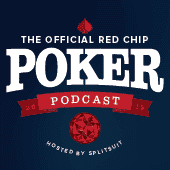Game Theory Optimal poker, better known as GTO, has taken the poker world by storm in recent years. The basic idea behind GTO is that there is a mathematically optimal way to play every NLHE hand. In other words, NLHE would be “solved” if a player made mathematically optimal play every time.
In this weeks podcast episode, coach Mike Gano straddles the line between an introduction to the fundamentals of GTO, and a look at some of the more complex concepts that you can put into practice to get a bigger edge in the games you play.
And if this topic interests you (as it should any serious poker player), Gano will be hosting a webinar on GTO on January 10, 2016. If you listen to the whole podcast, you’ll get a code for a discount on admission.

What is GTO?
To understand GTO, it’s no surprise you need to understand what game theory is. A discipline in and of itself that’s been around for over a century, game theory has had well-known applications in economics, political science and psychology. Game theory is the science of logical decision making. Game theory seeks to give a mathematical framework to behavior, so that, among other things, one can determine what the optimal decision or behavior is, given a particular set of circumstances.
One of the core ideas behind game theory is the Nash equilibrium, which basically states that when two competing players have the same strategic awareness of each others’ decision making process, such that neither player has any remaining decisions available that would give them an edge, an equilibrium is reached.
Game theory can be perfectly applied to poker, particularly the Nash equilibrium. Theoretically, if two players continue to make adjustments to each other’s play, at a certain point, they will each be playing an optimal, perfectly balanced strategy, with no further room to exploit or be exploited.
Related Link: 3 Ways GTO Can Improve Your Live Game
Rational Actions and Branching Decision Trees
There are two important caveats about game theory in the context of poker. The first is that it assumes our players are rational actors. If you’ve ever sat down at a live $1/$2 NL game, you know that’s clearly up for debate.
Gano talks about how GTO isn’t so much about finding and making the perfect decision every time, as it is identifying when your opponents make incorrect or irrational decisions so you can exploit them.
The second is that NLHE is a very complex game to analyze because the decision tree branches out into so many different directions so quickly. With multiple players waiting to fold, call or raise any amount around you, decision trees multiply into exponential complexity. This is why the only form of poker remotely ‘solved’ by computer AI is heads-up, limit hold ’em.
GTO Tools
Gano mentions a few key tools to help with off-table GTO analysis:
This is an area where software is a must to help with the mathematical complexity of analyzing how different ranges match up in different situations.
As very complex calculations become possible with powerful computers, and we see the science of GTO come to the foreground with “solver” software tools, we have to remember there is still an art and skill to applying these tools to your actual play.
Toy Games & Other Techniques
Gano talks about a few specific beginner techniques for GTO, like “Toy Games”. A toy game is a vast simplification of the real game in order to come upon a deeper understanding of optimal decision making before adding layers of complexity.
Gano recommends a few book to get started as well: The Mathematics of Poker by Bill Chen and Jerrod Ankenman, and Applications of No Limit Hold ‘Em by Matthew Janda.
He mentions river decision analysis is a great starting point for getting into GTO, because all the cards have come and the branching is at its least complex.
Getting Value from GTO
Gano explains that when he does GTO analysis, he will sometimes come across suggestions from the GTO tools that seem unintuitive, or counter to conventional poker wisdom. This is when he gets really excited, because understanding how to exploit these instances where the average player is making the non-optimal decision is where the money comes from.
Gano ends by saying “the numbers are astounding” when it comes to analyzing how +EV GTO play can be. Observing ten big blind differences between the “traditional” play and the GTO play should be enough to convince you to get into the cutting edge of poker strategy analysis.
Related Video: GTO vs. Exploitative Play (available to all PRO Members!)
Gano’s Webinar on GTO
You can catch Gano’s special webinar on GTO on January 10, 2016 at 12 noon EST. Go to Mike’s Poker in a Box to register. Make sure to listen to the podcast until the end for a special discount code!


Great episode!! Just to clarify, Mike, around the 35 minute mark when you discuss the BB/100 improvement you have calculated in certain scenarios, is that improvement solely due to following the pure GTO solution, or is that from using the GTO solution to personally create a stronger exploitative strategy?
Keep up the great work, Mike and James.
Thanks Mike! Gano will be back in a couple days and I’ll make sure he sees your comment!
It’s the latter: from a stronger exploitative strategy.
As I emphasize towards the end of the podcast, the real power here comes from not just solving for the GTO strategy but then using that to find the strongest exploitative strategy you can. Modern GTO tools will do this for you if you feed them the right inputs.
James – enjoyed the format of a little longer. I’ve been flirting with GTO, but was under the assumption it was to get equal play. Love Gano’s lecture that it is great for maximum exploitative play! Just missed the webinar today 🙁
Excited when the webinar is available online.
Thanks!
Thanks for the feedback Beth! Keep your eyes on his site to purchase the replay of the webinar =)